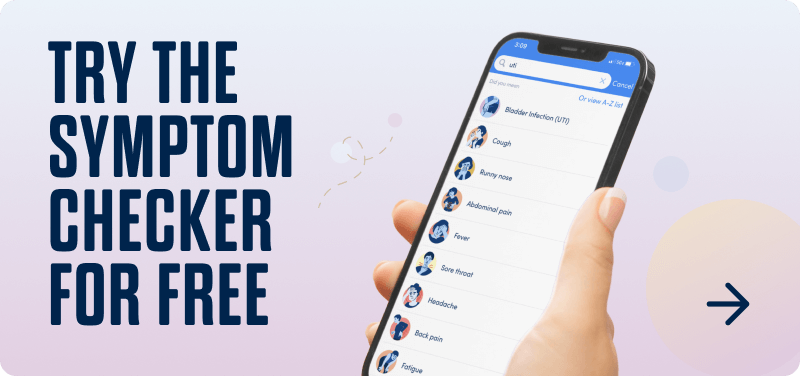Diabetes can cause changes to how you see, including eye floaters, blurry vision, and more. In this article, we’ll explore how diabetes affects eye health, short and long-term complications, treatment, and prevention. We’ll also discuss signs that you should see a medical provider.
Diabetes and Blurry Vision: How Diabetes Affects Your Eyes
Diabetes can affect eye health and vision in many ways. The effects can be short-term or long-term. In many cases, blurred vision is a short-term sign that blood sugar is out of balance, either too low or too high. It can sometimes be the first symptom that a person has before diabetes is diagnosed. This can feel like you just can’t quite clear your eyes or like your glasses prescription is slightly off. When blood sugar levels return to normal, so does vision.
High blood sugar and low blood sugar affect vision because they alter how fluids move in and out of the eye. These changes can lead to swelling, and even tiny changes to the eye lens can affect how well the eyes can focus and process light. Low blood sugar may also cause double vision or dimmed vision.
Vision changes can also happen when you start taking a new medication to control diabetes, although the side effect is short-lived.
In some cases, diabetes can cause long-term problems or permanent vision damage, especially if it is not well-controlled. If you have diabetes and notice changes to your vision, let your healthcare provider know right away.
Talk to a doctor from home
Manage diabetes medications without leaving your house.
Long-Term Vision Complications
Diabetes can slowly and progressively worsen eye health, including how well you can see, over time. This is more likely if diabetes is poorly controlled or you develop additional complications.
Possible diabetic eye disease and long-term vision complications in diabetes include the following.
Diabetic Retinopathy
Diabetic retinopathy is a disorder that affects the retina of the eye. It progresses in 4 stages:
- Stage 1: Mild
- Stage 2: Moderate
- Stage 3: Severe
- Stage 4: Proliferative
Stages 1-3 of diabetic retinopathy do not typically produce noticeable symptoms, and it may be discovered in these stages by a routine eye exam. Stage 4 diabetic retinopathy can include any of the following symptoms, which may continue to worsen over time:
- Blurry vision
- Floaters in the eye
- Loss of vision
- Color changes in vision
- Night blindness
- Vision distortions
Diabetic retinopathy cannot be cured, and damage that is done cannot be reversed. But eye health can be stabilized with treatment, which may reduce further vision losses. This is why it is very important to get regular eye exams, especially if you have diabetes.
Diabetic Macular Edema
At the center of the retina is the macula, the part of the eye that works to give you crisp vision at the center of your focus.
Macular edema happens when the macula swells. This is caused by fluid leakage. It includes symptoms like blurry vision, wavy vision, or color changes. When macular edema is caused by diabetes, it typically affects both eyes in the same way.
Glaucoma
Glaucoma is an eye disease that occurs when excessive pressure in the eye causes damage to the optic nerve. Diabetes doubles the risk of developing glaucoma.
Signs of glaucoma include:
- Blurry vision
- Eye pain
- Eye redness
- Seeing halos around lights
- Tunnel vision
- Poor peripheral vision
- Nausea or vomiting
Cataracts
Cataracts occur when proteins in the lens of the eye break down and clump together. These clumps look like clouded spots in the eye and negatively affect vision quality. Cataracts can happen from normal aging processes, but occur more frequently and at younger ages in people with diabetes.
Other signs of cataracts include:
- Glares or halos around lights
- Faded colors
- Cloudy vision
- Blurred vision
- Double vision
- Light sensitivity
- Vision that does not improve with new glasses prescriptions
- Prescriptions that change frequently or only work for a short time
Treatment
For people who have diabetes, it is important to maintain regular eye health exams. The best way to treat vision problems is to detect them early. It is also important to manage diabetes well to avoid eye or other health complications.
Eye treatments for diabetes vision problems will depend on the symptoms, the cause, and the severity of the vision issue. Maintaining healthy glucose and blood pressure levels is essential for treating eye problems and preventing further complications and vision loss.
Some treatments for diabetes-related eye problems are:
- Diabetic retinopathy: Injections to stop swelling, laser surgery, or microsurgery
- Cataracts: Brighter light, updated glasses prescriptions, or surgery
- Glaucoma: Prescription eye drops, laser treatments, or surgery
- Macular edema: Injections or photodynamic therapy
Prevention
Anyone who has diabetes is at an increased risk for vision-related problems. Since there is no cure for most eye complications of diabetes, it is important to prevent them whenever possible. This can be done in the following ways:
- Utilize diet, lifestyle, and medications to maintain normal blood glucose levels and blood pressure levels.
- Get regular eye exams.
- Follow through on all well-checkups and routine health maintenance.
- Tell your medical provider immediately if you notice any vision changes (even slight).
Talk to a doctor from home
Manage diabetes medications without leaving your house.
When to See a Medical Provider
Blurry vision can be common, and in many cases, it is short-lived. Fatigue, poor sleep, allergies, and outdated glasses prescriptions can all contribute to short-term blurry vision. If you have diabetes, low or high blood glucose levels can cause brief changes to vision.
You should consult a medical provider if you notice vision changes that last longer than a few hours or if they happen consistently for short periods of time. If vision suddenly changes or is accompanied by other symptoms, like confusion, severe headache, or other abnormal signs, seek emergency medical care.
How K Health Can Help
Did you know you can get affordable virtual primary care with K Health?
Check your symptoms, explore conditions and treatments, and if needed, text with a healthcare provider in minutes.
K Health’s AI-powered app is based on 20 years of clinical data.
Frequently Asked Questions
K Health has strict sourcing guidelines and relies on peer-reviewed studies, academic research institutions, and medical associations. We avoid using tertiary references.
-
Acute Hypoglycemia Decreases Central Retinal Function in the Human Eye. (2011).
https://www.ncbi.nlm.nih.gov/pmc/articles/PMC3149775/ -
Cataract in diabetes mellitus. (2019).
https://www.ncbi.nlm.nih.gov/pmc/articles/PMC6422859/ -
Diabetes and eye disease. (2022).
https://medlineplus.gov/ency/article/001212.htm -
Diabetic eye disease. (2020).
https://www.niddk.nih.gov/health-information/diabetes/overview/preventing-problems/diabetic-eye-disease -
Diabetic retinopathy. (2022).
https://www.nei.nih.gov/learn-about-eye-health/eye-conditions-and-diseases/diabetic-retinopathy -
Diabetic eye problems. (2022).
https://medlineplus.gov/diabeticeyeproblems.html -
Diabetes and vision loss. (2022).
https://www.cdc.gov/diabetes/managing/diabetes-vision-loss.html -
Hyperglycemia. (2022).
https://www.ncbi.nlm.nih.gov/books/NBK430900/ -
Hypoglycemia. (2022).
https://www.ncbi.nlm.nih.gov/books/NBK534841/ -
Macular edema. (2022).
https://www.nei.nih.gov/learn-about-eye-health/eye-conditions-and-diseases/macular-edema

 Medically reviewed
Medically reviewed
